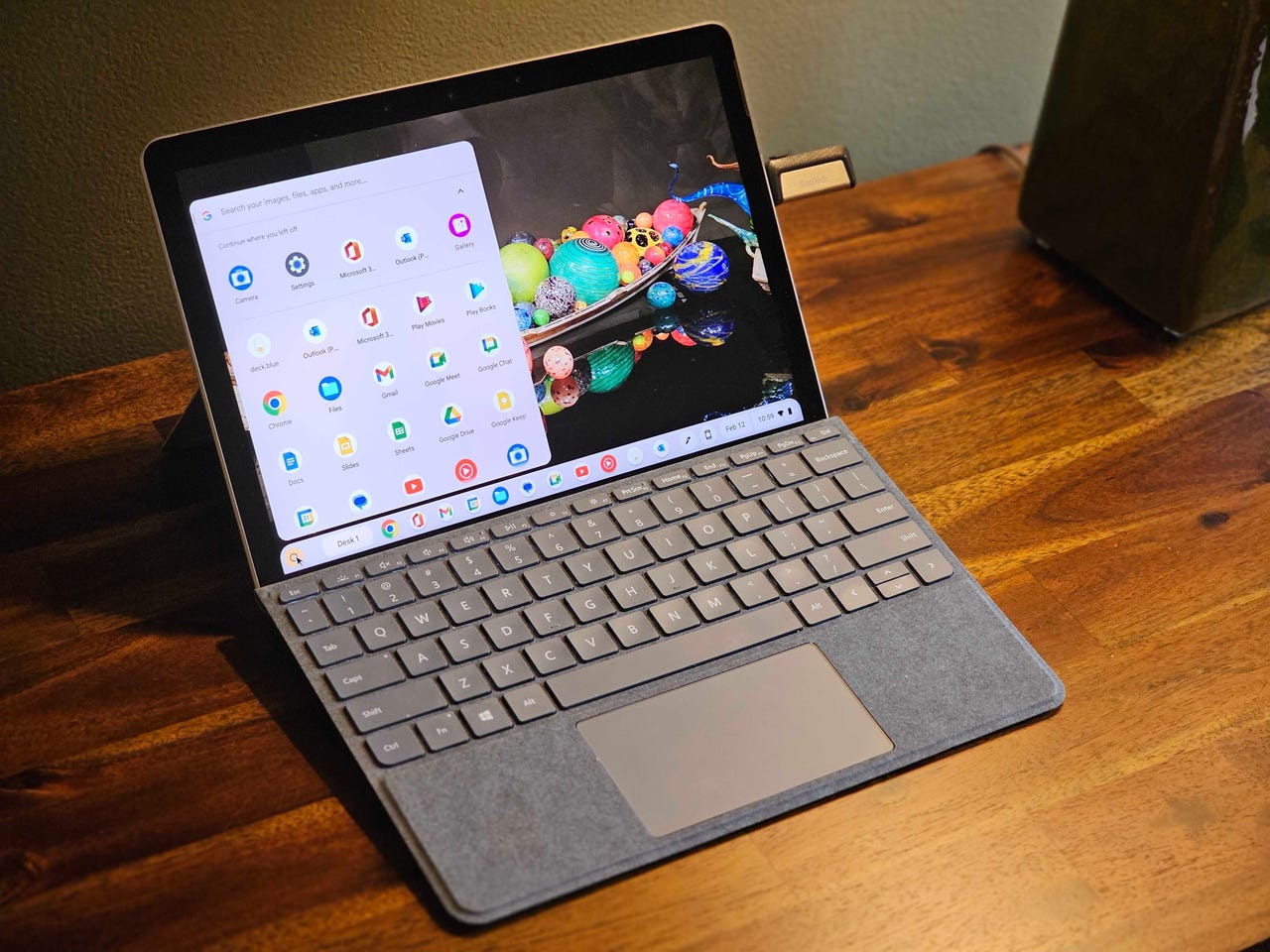
































ChromeOS is not merely a simplified operating system. It's also a relatively secure operating system -- thanks to its multiple layers of protection for preventing things like viruses and malware from harming your device and accessing your data.
I've identified five settings to take ChromeOS to even higher levels of security. Let's dive in.
This is an essential security move, whether you use ChromeOS or not. Two-step verification (aka 2FA) adds yet another layer of security to the login process for online accounts. When you add 2FA to a Google account, an associated mobile device becomes required as the 2FA authentication mechanism.
Also: Google might abandon ChromeOS Flex. Here's why - and what you can do about it
To use 2-step verification on a Chromebook, make sure you've first enabled 2FA on your Google account. Since ChromeOS requires a Google account, you can't skip this part.
Then, open Settings on your Chromebook and go to "Privacy and security" > "Manage other people." On that page, disable the "Show usernames and photos on the sign-in screen" option. Once you've done that, reboot the device, and you should be required to use 2FA to log in.
Make sure to log out or reboot after enabling this setting.
Not every application should have access to your device's camera and microphone. Let's say you install a basic game on ChromeOS (one that doesn't offer a multiplayer mode) and, by default, it enables access to the camera or the mic -- or both. You might have unwittingly installed an app that can use either your camera or mic to spy on you. (I'd be immediately suspicious of any app that doesn't need access to the camera or mic yet requires either to be enabled.)
Fortunately, ChromeOS makes it possible to enable/disable access to either piece of hardware. To do that, open Settings and go to "Privacy and security" > Privacy Controls. From that page, you'll see the "Camera access" and "Microphone access" options. Click on either one, scroll through the list of apps, and disable access for any app that shouldn't have it.
Make sure to go through the lists for both the camera and the mic.
I enable this feature for every Chromebook that I -- or my friends and family -- use. With this feature, you can set ChromeOS to use DNS over HTTPS, which encrypts all of your DNS activity (such as searches) so no one can spy on you.
Also: 5 things ChromeOS needs to rival MacOS
To enable this feature, go to Settings > "Privacy and security." Near the bottom of that page, enable "Use secure connection to look up sites." You'll then need to select a DNS provider that uses DNS over HTTPS. I recommend Cloudflare (as their service doesn't slow down searches as much as others).
To learn more about using DNS over HTTPS, check out "How to configure specific DNS servers on your Chromebook (and why you should)."
Cloudflare has been the best DNS over HTTPS service I've used.
Out of the box, ChromeOS -- and the Chrome browser -- will sync everything to your Google account, so that any browser or Chromebook you have associated with your account can use the same data. (The ChromeOS sync options differ from the Chrome browser sync options, which let you sync cookies, passwords, tabs, apps, bookmarks, extensions, history, settings, themes, reading lists, open tabs, and more.)
Also: ChromeOS finally steals a faster multitasking feature from Windows and MacOS
With ChromeOS sync, you get only four options to enable or disable: apps, settings, Wi-Fi networks, and wallpapers. I disable all four because I don't want any of those settings -- especially Wi-Fi networks -- winding up in the wrong hands.
To customize your sync, go to ChromeOS Settings > "Privacy and security" > "Sync and Google Services" > "Manage what you sync." Click Customize Sync and then disable the options you feel should be off.
For heightened security, you might not want to sync all of your data across devices.
There are times I have house guests who'll need to use a laptop to browse -- but who don't use ChromeOS. Although I'm happy to let them use a Chromebook, I do not want to simply hand over my laptop and let them use my account. Instead, I use guest browsing -- aka guest mode -- a special, minimal account with zero access to my data -- it's nothing more than a web browser that doesn't save data from login to login.
Also: 5 ways to improve your Chrome browser's security (and why you should)
To enable guest browsing, go to Settings > "Privacy and security" > "Manage other people." On that page, enable "Guest browsing."
Guest browsing can prevent others from accessing things like your passwords.
Once you've taken care of these settings, ChromeOS will be a bit more secure. Remember to also do a bit of work on your Chrome browser to ensure it's as secure as possible.
 Горячие метки:
Технологии и оборудование
Горячие метки:
Технологии и оборудование